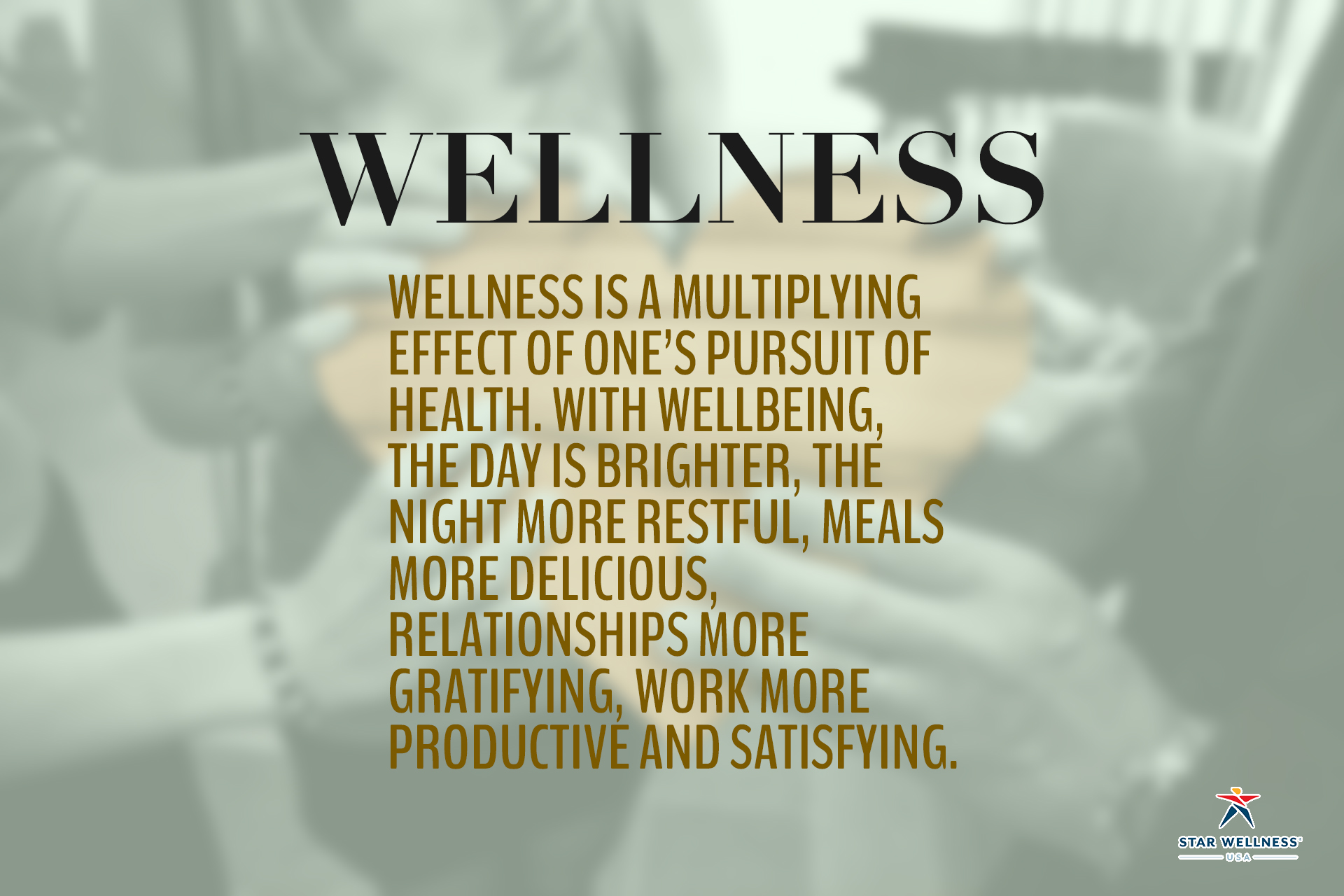There’s something more to wellness than just staying away from the doctor’s office. It’s not just about avoiding health problems.
Wellness is a multiplying effect of one’s pursuit of health. With wellbeing, the day is brighter, the night more restful, meals more delicious, relationships more gratifying, work more productive and satisfying. When we are healthy, we are well. And it’s good.
This kind of wellness requires a proactive and committed approach to our body’s needs.
What is Wellness?
According to the 2013 Global Wellness Tourism Economy report wellness is defined as a state of complete physical, mental, and social well-being.
That definition is a good one. But, we think it’s more than that. Wellness goes beyond mere freedom from disease or infirmity. It’s about “a proactive maintenance and improvement of health and well-being, expressed on a continuum that extends from reactive to proactive approaches to health,” writes Dr. Jack Travis in his book Illness Wellness Continuum.
To be well, one must be firmly on the proactive side of their health. They’ll incorporate the appropriate attitudes and activities that prevent disease, improve health and enhance their quality of life. By doing so, they will bring themselves to increasingly optimum levels of well-being.
As in every great, and distinguished pursuit, the professional athlete or Nobel Laureate, true wellness comes only as a result of hard training, habitual execution and long-term commitment.

How Big is the Wellness Industry?
In 2007, a leading economist predicted that wellness would be the next trillion dollar industry. Were they correct? Would you like to guess how big the wellness industry is today, a mere 10 years later? It’s a $3 trillion industry! That’s three times larger than the pharmaceutical industry, big pharma.
The wellness industry encompasses many facets of economics, including:
- Tobacco cessation
- Workplace wellness
- Mental health
- Anti-aging
- Financial health
- And many others
We will focus on corporate – or workplace – wellness. Corporate wellness is a $8 billion industry in the U.S. and is expected to grow at a clip of nearly 7.8% per year through 2021.
The Global Wellness Institute estimates it is a $40 billion industry worldwide. 70% of U.S. employers already have a wellness program. Corporate wellness programs are here to stay.
Wellness and Workplaces of the Future
As we continue to learn the power of wellness in our personal lives, many businesses are realizing the massive potential before them. How much can we improve our workforce with wellness?
Here is a simple summary of the major problems among the workforce in the United States.
- As an employer 5% of your population accounts for 50% of your healthcare costs
- 50% of all health benefit costs come from employees with controllable conditions
- Employers are becoming more desperate for ways to control health care costs
- Forbes recently published that “health costs are by far the biggest threat to the nation’s fiscal health in the long run”
- Medical costs are the #1 cause of bankruptcy in the U.S.
Learn how Star Wellness has become a leading employee wellness program in the US. Contact us directly.


